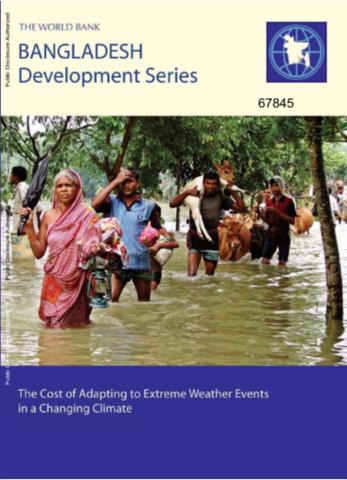Resource information
Bangladesh is one of the most climate vulnerable countries in the world. Situated in the delta of the Ganges, Brahmaputra, and Meghna (GBM) rivers, the country is exposed to a range of river and rainwater flood hazards due to climate variability, the timing, location, and extent of which depend on precipitation in the entire GBM basin. The Government of Bangladesh is fully committed to global climate-change advocacy and action, having already invested heavily in adaptation measures and policies. In recent decades, the government has invested more than US$10 billion to protect its population and assets in the floodplains. Given the uncertain magnitude and timing of the added risks from climate change, it is essential to identify the costs of climate proofing Bangladesh's critical infrastructure from intensified monsoon floods and cyclonic storm surges. Previously, few if any detailed studies have been developed on the costs of climate-proofing the country's infrastructure assets from inland monsoon floods and cyclones. Most analytical work to date has been confined to case studies, with relatively limited sets of locations, impacts, and adaptation measures. This study aims to fill that knowledge gap by providing detailed vulnerable population estimates and estimates of the incremental costs of asset adaptation out to the year 2050. It is part of a larger World Bank-supported study, entitled Economics of Adaptation to Climate Change (EACC), funded by the governments of the United Kingdom, the Netherlands, and Switzerland.


